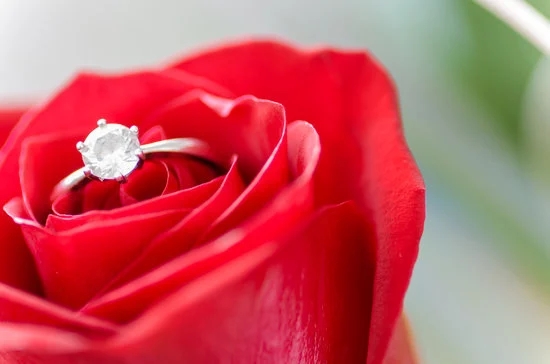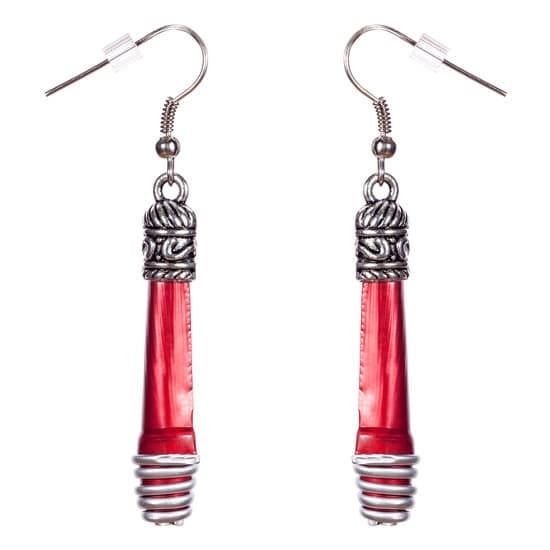Introduction
Aquamarine is a precious gemstone that comes in several shades of blue-green. It’s valued for its beautiful color, clarity and durability. Jewelry cleaners are designed to clean gemstones, diamonds, gold and silver jewelry without causing damage. They range from simple home remedies such as dish soap, to heavier duty chemical solutions found at a professional jeweler.
When it comes to aquamarine and jewelry cleaner, the most important thing to remember is not all processes are beneficial for the gemstone itself. In fact, leaving aquamarine in certain types of jewelry cleaner can actually result in irreversible damage or loss of color and luster. Therefore, it’s essential to know which type of cleaner is best suited for an aquamarine piece before attempting any cleaning process.
The safest way to begin cleaning aquamarine jewelry is by using warm water with a teaspoon of mild dish soap or gentle castile soap. This solution should be used with a soft brush or cloth and applied gently over the entire surface with care taken not to let any areas soak too long before rinsing with warm water. After this process has been completed, other types of cleaning solutions may be used depending on whether they contain harsh chemicals which could damage the delicate features of an aquamarine stone over time if used incorrectly or too often. If the use of liquid cleaner is necessary, consult a professional jeweler who will be able to advise on the best product for your particular situation.
What Is Aquamarine and How Does It Impact Jewelry?
Aquamarine is a type of semi-precious gemstone that is valued for its blue-green hue. It has been used as an ornamental stone since ancient times and it has been believed to have healing powers and protective qualities. Aquamarine ranges in color from very light blue to teal green, and the gems are often cut in modern styles such as cabochons or faceted cuts. Aquamarine is sometimes set in gold or silver, though some settings may include other materials such as platinum or titanium.
The hardness of aquamarine ranges from 6.5 to 8 on the Mohs scale, making it suitable for use in jewelry. However, it can be vulnerable to damage from everyday wear and tear. For this reason, many people choose to clean their aquamarine jewelry regularly with special products made specifically for jewelry cleaning. Jewelry cleaner typically contains chemical agents that effectively remove tarnish without damaging the metal or the gemstone itself, so it is generally safe to put aquamarine in jewelry cleaner.
Advantages and Disadvantages of Adding Aquamarine to Jewelry Cleaners
Advantages: Adding Aquamarine to jewelry cleaners may help boost the cleaning power of the solution. This is due to its polishing characteristics, which can help remove dirt, dust and tarnish from a piece of jewelry.
Disadvantages: Aquamarine can be an abrasive material, so it could potentially damage some gemstones if used incorrectly. It is also important to check instructions with both the jewelry and the cleaner to make sure that they are compatible with each other and won’t cause any unwanted reactions or results. If unsure it would be best to play it safe and not use any additional materials in a jewelry cleaner.
Key Benefits of Aquamarine When Used in Jewelry Cleaners
Aquamarine is one of the safest stones to use in jewelry cleaning solutions. It provides several benefits that make it preferable compared to other stones such as quartz or amethyst. First, it is odorless, which helps reduce irritation to skin that may occur when using a cleaning solution made with different types of stones. Second, aquamarine does not dissolve in water and therefore does not cause any staining on clothes or furniture when used for jewelry cleaning purposes. Third, aquamarine has disinfectant properties that make it ideal for killing bacteria, germs and fungi from jewelry surfaces; this reduces the risk of jewelry damage from bacterial growth. Finally, Aquamarine’s high refractive index makes it an excellent crystal for polishing silver and gold jewelry surfaces by creating bright highlights that last for a long time.
Key Considerations for Aquamarine in Jewelry Cleaners
Aquamarine, a beautiful and sought-after gemstone, is often seen in fine jewelry. It can be a tricky stone to clean and care for properly though. When considering putting aquamarine in jewelry cleaner, there are a few key factors to consider.
The first factor is the pH of the cleaner being used. If it’s too acidic or alkaline, it could damage or discolor the aquamarine gemstone. Make sure that the pH of the cleaning solution you choose is neutral to slightly acidic, as this will be gentle enough to work without disrupting the color or structure of your stone.
Another factor to consider is what other ingredients are included in the jewelry cleaner. Some ingredients such as acids or harsh detergents can strip away oils naturally present on jewelry that protect stones against damage over time – these should be avoided when looking for safe solutions to use when cleaning aquamarine gems. Additionally, if using an ultrasonic cleaner, make sure that its power settings are not high enough to cause any damage to your precious stone.
Finally, never forget about safety precautions when handling jewelry cleaners or any chemicals used on precious materials like diamonds and aquamarines. Wear gloves and eye protection at all times and ensure adequate ventilation where you’re working with your pieces. This will help prepare for any accidents that may happen while caring for your valuable jewels.
Tips for Using Aquamarine in Jewelry Cleaners
It is not recommended to put Aquamarine in jewelry cleaner. Aquamarine has a high sensitivity to acid-based cleaning products, making it vulnerable to bleaching, discoloration and cracking. Therefore, any attempted cleaning can potentially damage the stone.
A better option for caring for Aquamarine jewelry is mild soap and water. Create a mild warm soapy solution with a few drops of gentle dish soap and warm water. Soak the jewelry for 5-10 minutes and then use soft bristle brush or a clean cloth to gently scrub away dirt or debris from the surface of stones or setting. Once rinsed, place on a dry, lint-free cloth and let air dry completely before wearing again.
To prevent tarnish, store Aquamarine jewelry in individual airtight plastic bags (preferably zip-lock). This will help keep dirt and other pollutants away from the stones that cause oxidation or discoloration of metal settings and clasps over time.
In addition, while wearing your gemstone jewelry it’s important to avoid knocks and knocks against hard surfaces as well as direct sunlight exposure prolonged contact with cosmetics/chemicals—all of which can damage the stone’s clarity and color vibrancy over time.
Overall Conclusion
Pros:
Aquamarine is a precious gemstone that can help give jewelry cleaner an extra sparkle when it is added to the solution. Because aquamarine is composed of beryl and traces of iron, it can also make the jewelry cleaner more effective in removing any dirt or build up from jewelry pieces.
Cons:
Aquamarine is a more expensive option amongst gemstones, so adding it to your jewelry cleaner may increase the cost of the solution. Additionally, some heavy-duty gemstones can be too hard for certain types of jewelry cleaner solutions to handle and may end up causing damage to jewelry that has these gems embedded in them. Before adding aquamarine to a jewelry cleaner solution, it is important to make sure that both the stones used and the liquids used are suitable for use together.
Frequently Asked Questions About Aquamarine and Jewelry Cleaners
Q: Is it safe to put aquamarine in jewelry cleaner?
A: In general, the answer is yes. Aquamarine is one of the few gems that can be placed in an ultrasonic or steam cleaning solution without any damage or discoloration. However, some jewelers may not recommend this method. It is best to consult with a professional jewelry cleaner to determine the best approach for cleaning aquamarine jewelry. Additionally, they might advise against placing light-colored aquamarines into any type of cleaning solution, since this could result in discoloration and damage to the gemstone.
Alternatives to Using Aquamarine in Jewelry Cleaners
Jewelry cleaners that specifically mention the use of aquamarine should not be used if you are cleaning aquamarine jewelry. Aquamarine is a delicate gemstone and using an abrasive cleaner could cause scratches or other damage to it. Gemstones like diamonds, rubies, emeralds, sapphires, topaz, and turquoise may benefit from the use of a mild jewelry cleaner. An alternative option for cleaning aquamarine is to use warm water with mild dish soap and a soft cloth. Avoid scrubbing the jewelry as this could cause scratching. Brushing lightly with a soft toothbrush can help remove grit that is stuck in small crevices on the jewelry’s setting. To restore luster to the piece of jewelry, buff it lightly with lint-free cloth such as microfiber or chamois fabric. If your aquamarine jewelry has an antler mount or requires special care instructions consult with a qualified jeweler before attempting any form of cleaning.

Welcome to my jewelry blog! My name is Sarah and I am the owner of this blog.
I love making jewelry and sharing my creations with others.
So whether you’re someone who loves wearing jewelry yourself or simply enjoys learning about it, be sure to check out my blog for insightful posts on everything related to this exciting topic!





